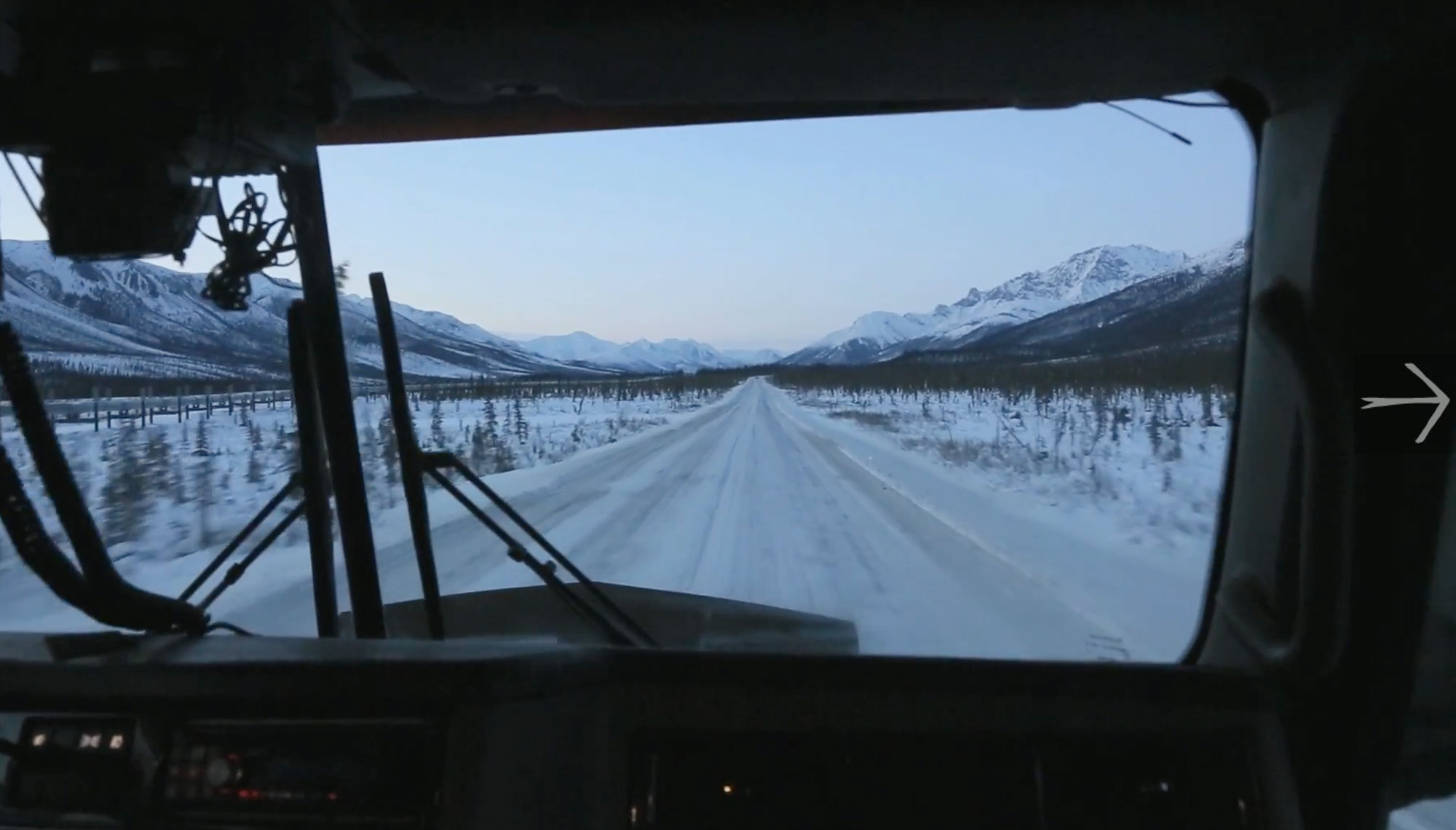
Venturing into the frozen climes of the Arctic, Journalist Zoé Lamazou and Graphic Designer Victor Gurrey have together produced the unique interactive documentary, A Whaling Season in Alaska. The piece is a rare look into the lives and traditions of the Iñupiat population and a study of how offshore drilling affects their already vulnerable existence. I spoke with Zoé and Victor about their expedition through Alaska, the complexities of filming in remote, sub-zero conditions and how the needs of story dictated the structure of their interactive web documentary.
https://vimeo.com/91813354
[Be sure to visit awhalingseasoninalaska.com to experience the full interactive documentary]
What inspired you to make A Whaling Season in Alaska as an interactive documentary?
Zoé Lamazou: When we left Paris to spend three months in the extreme north of Alaska, from March to May 2013, we had planned to make a book. We wanted to see and tell the story of oil development in this remote region, its consequences on the environment and above all, on the very existence of the people of the Great North. I am a journalist – once specialised in print – and Victor is an illustrator. We managed to convince a French publisher (Éditions Paulsen) to grant us an advance on royalties that allowed us to fund part of the trip and the equipment.
Victor Gurrey: But in fact, from the very start of the project, we had in mind a multimedia version for our long-form feature story. In our luggage, we carried with us notebooks, pens and pencils, watercolour but also two cameras and a sound recorder. We knew that we had first to focus on making the book but we always thought the rushes we would bring back with us would allow us to develop for the web an alternative to the literary story. We imagined at that time that it would be a sort of making-of or an enhanced trailer of the book. Back from Alaska, our initial plan changed thanks to two people who simultaneously joined the project, almost by chance.
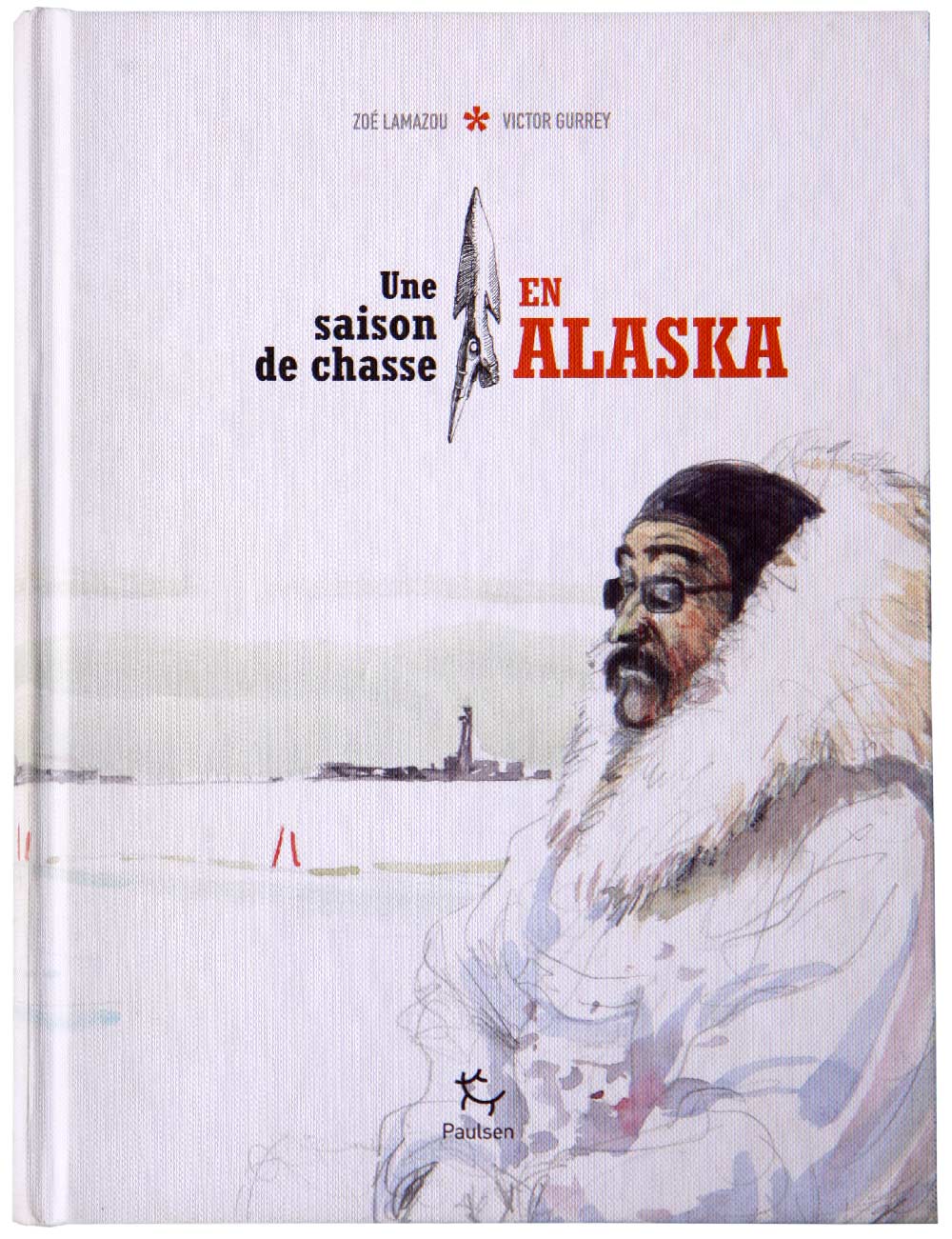

ZL: I was finishing writing the manuscript for A Whaling Season in Alaska. Victor was watching our rushes again, and this day he was listening to our friend Raphaël Treiner’s (aka Sheriff) music. Suddenly, it became clear that this music was made for our images and vice versa! We had planned to work on the web version as soon as the book was published. But this sensory experience sped everything up. Victor immediately sent our audio rushes to Raphaël who integrated them into new original titles that sounded like it had been composed two feet in the snow in Alaska.
VG: Raphaël works closely with Lucie Moreau (Lux for Film) who was to become our producer. Lucie saw our images and witnessed the alchemy that was happening with Sheriff’s music. Her excitement gave a momentum to the new project.
We wanted to turn this documentary into a ‘sensory immersion’, an interactive story where the user would become a traveller himself.
When we got to work together, the ambition was no longer to make a trailer but to develop for the web a real documentary with literary, artistic, journalistic dimensions. We wanted to turn this documentary into a ‘sensory immersion’, an interactive story where the user would become a traveller himself.
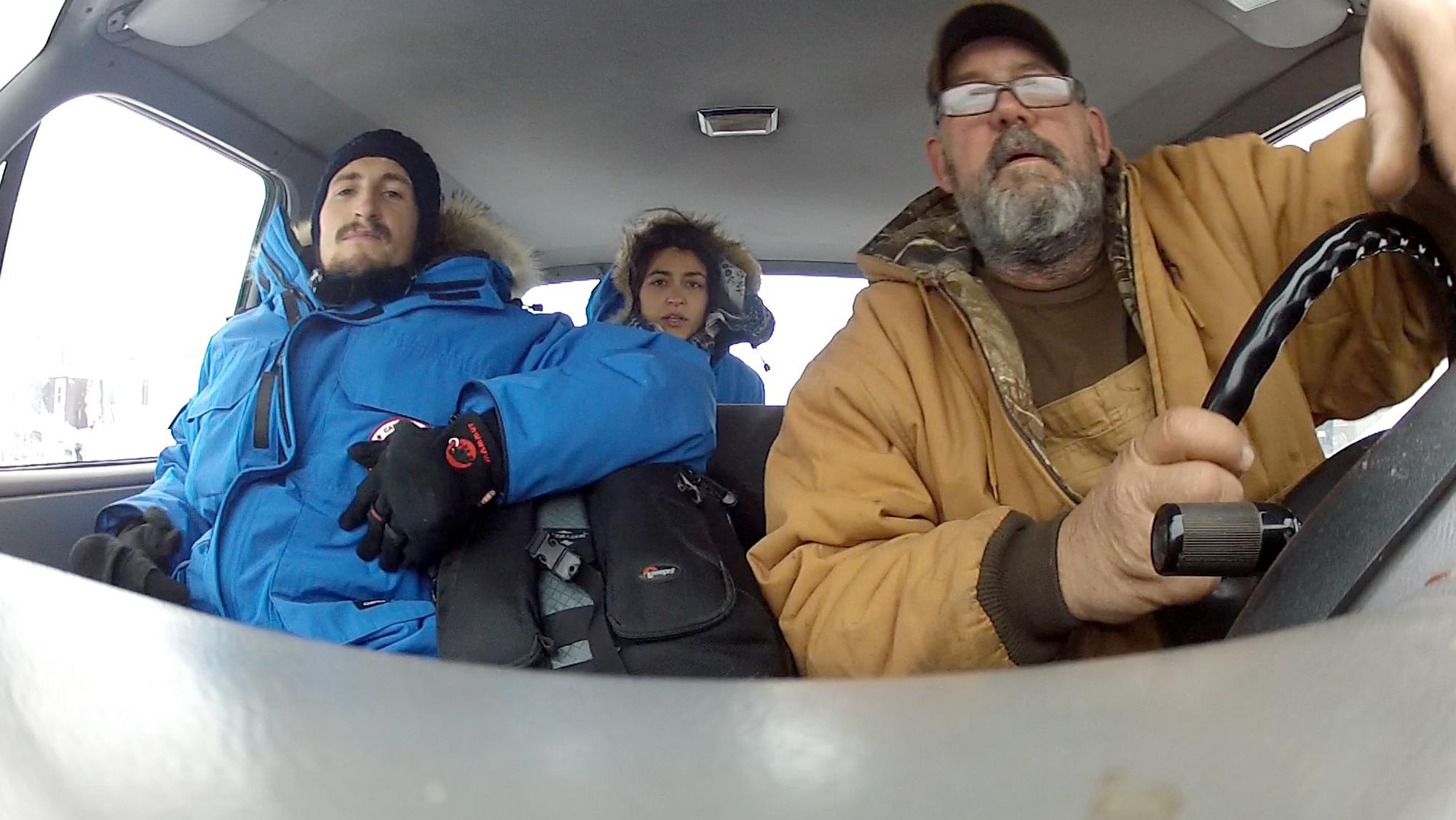
What software and camera did you use? Did you have any problems shooting with this equipment due to the tremendously cold weather conditions?
ZL: In Alaska, we had a Canon 50D and a Canon 5D Mark III, that allowed us to take pictures and film. As for the sound, I had a Zoom H4n recorder.
VG: The major issue with extremely cold conditions is that the battery of any device gets empty much faster than in a temperate climate. We had doubled the number of batteries we needed and would always carry two or three of them in our parkas’ inside pockets, to keep them warm. The other concern is the lens of the camera that fogs every time you get from a very cold outside into a warm house. The solution to avoid the thermal shock is to place the camera in a plastic bag before getting in any heated place and let it warm up slowly there before using it.
ZL: My Zoom H4n recorder had travelled a lot before I took it to Alaska. It worked well again for the three months we stayed there, but since then it is far less reliable… It would be interesting to know whether it is the cold that accelerated its end.
VG: Last but not least, the software we chose to develop our web documentary is Klynt. We hesitated before choosing an all-in-one digital storytelling software as at first we thought it would limit our creativity. We tested other options but we realised that Klynt was actually the best solution for us independent documentary makers. It was intuitive, efficient and flexible. We pushed it a bit and we got all we wanted from it. A Whaling Season in Alaska is now featured as the best project in Klynt’s gallery!
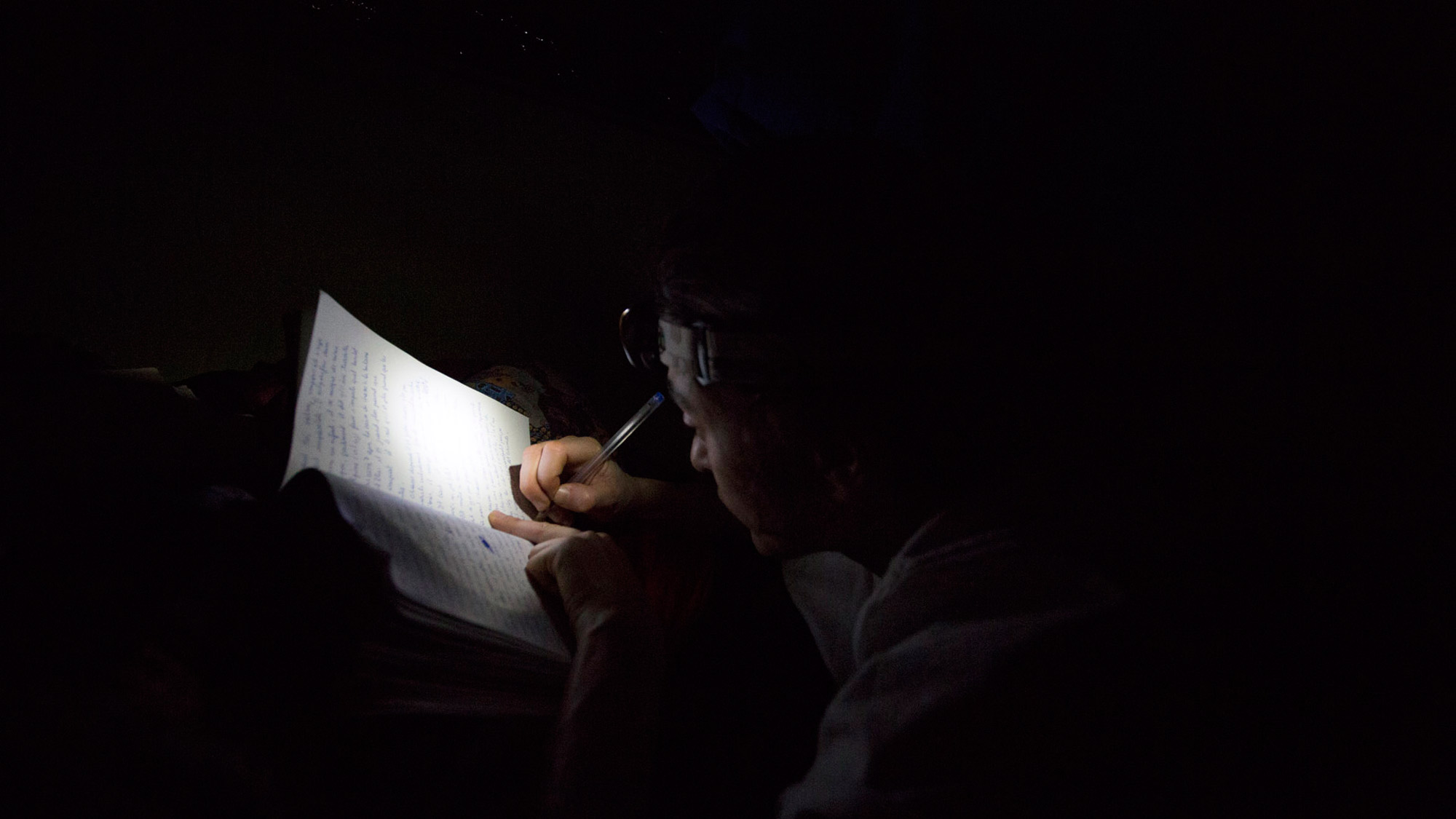
What made you pick a linear subdivided narrative structure over more intricate interactive structures?
ZL: Our ambition was always to put the story first. It is the story, in a journalistic and traditional sense, that keeps the user in front of their screen, not the promise of a trick or the threat of a ‘game over’ if he clicks on the wrong spot. A Whaling Season in Alaska purposefully unites journalistic rigour with the poetry and dreamlike images that the Arctic landscape – and its inhabitants – inspires in us.
The format of our linear subdivided narrative follows the notation we used in the journal we kept with us on site. It allows the user to tap into the rhythm of our travel and our research. But exploring a digital story, as simple as it can be displayed, is not instinctive for everybody. And some new users, who had never experienced web documentaries before, told us they sometimes had to search for the way to go from a place/sequence to another. Just as we had to do when we were travelling in Alaska!
VG: The topic of our documentary is complex enough: for ninety days, we investigated and observed the transformation under way in the Arctic – in the environment, the social practices, the expectations, and the ideals of the inhabitants of the Great Alaskan North. We did not want to overlap the double structure of our story (a poetic trip and a journalistic investigation) with a playful dimension.
Their reality is not a virtual reality, it is not a game or a tale, and our purpose was not to exploit it as such.
Interactive documentaries that look like video games or display more intricate narrative structures are often very attractive. But we did not want to take the risk that some users, who could be interested in our story, drop the whole experience just because they would not be used to gaming or to a high level of interactivity. To us, the choice of a linear structure also meant respect for our topic and the people we met in Alaska. Their reality is not a virtual reality, it is not a game or a tale, and our purpose was not to exploit it as such.
ZL: We believe sound, video intertwined with text, watercolour, drawings and photography supported by an original soundtrack, elegant graphic design and even limited interactivity options (a double path via map and main interface) create a completely immersive experience. The eleven sequences of A Whaling Season in Alaska viewed together or in isolation, portray a taut and emotional drama conveying to the user all the tension inherent in the topic. And that is all we looked for.


How did you plan for all the artistic elements of this journey simultaneously?
VG: The only decision we made prior to shooting was that we wanted to make some very contemplative still-videos. Choose a landscape, define a frame and let the camera shoot. We also knew we would not have time to shoot sequences. As we were primarily focusing on the book, we had to make choices. For example, Zoé would lead the interviews, write a lot, and I drew portraits while she was interviewing. Both of us took a lot of pictures. We recorded a lot of sounds. These elements – video, pictures, sound clips – were like field notes that we were taking.
ZL: We had prepared our trip long before going in Alaska, but we did not know what would emerge from it. We had extensively read about our topic, we had identified most of the places where we wanted to go and the people we wanted to meet. We had secured some contacts. We had anticipated climate conditions. And then, on site, we let the trip surprise us. This is where all the excitement lies and this is the fate of any travel: you bring back something different from what you expected.
VG: All the creation period was a time for constant adjustments. We had to adapt or work around the expectations of funders and potential broadcasters. We lacked traditional and homogeneous material. We had rushes of all formats and length. But as we had no plan before getting to work, we had full latitude to change our minds at any time.
How do you storyboard for an interactive documentary?
VG: While in Alaska I started to make sketches of web pages that would display a theme and a portrait. But the work on the storyboard really began when we were back in France, as the book was already published. A Whaling Season in Alaska, the web documentary, took many different forms, we adapted the format of our documentary to the rushes available.
We tested several prototypes and half a dozen of storyboards emerged, more or less similar to the book’s structure. We eventually chose a chronological narrative, which is different from the book. And we created our sequences relying on all the available rushes, these raw video, photo and sound notes we had brought back. We built our documentary around eleven key sequences.
How did you get in touch with your subjects?
ZL: We started preparing our trip to Alaska in September 2012, six months before taking off. Along with Victor, I organised this fieldwork just as I prepare any journalistic story: reading extensively, collecting contacts, and making some preliminary interviews by phone or Skype. Once in Alaska we improvised a lot, we met people spontaneously. Most of the protagonists of the documentary are people we had never met before. It happened by chance or by luck. We are now friends with most of them.
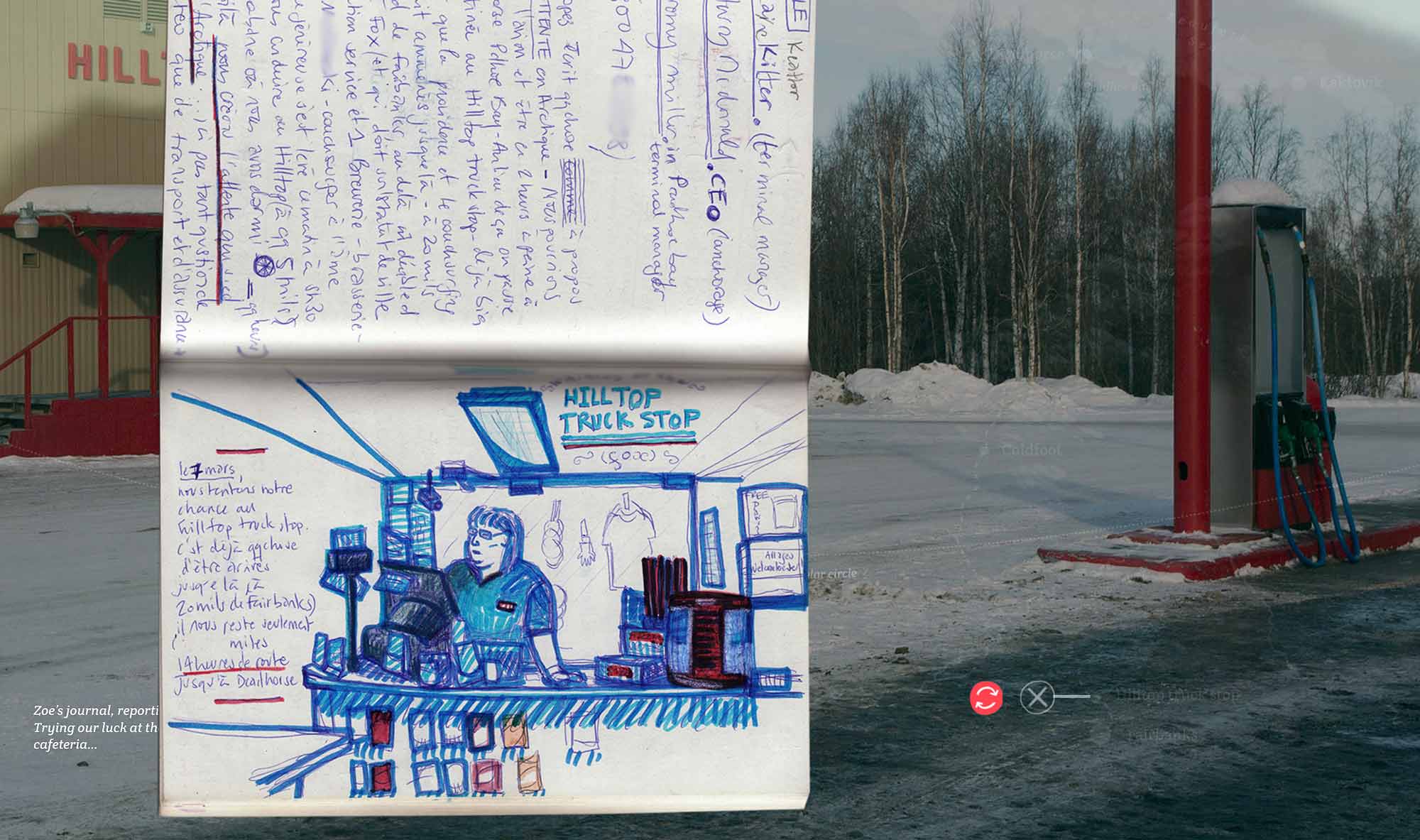
How has the idoc been received?
VG: Many different forms of digital stories started to appear on the web ten years ago. Some were very good and met nice success. But this momentum slowed, especially in France, probably because no one has found a sustainable economic model in this field yet. The web documentary format is well known by media makers, journalists or documentary makers. But it is still looking for a large audience!
ZL: While trying to promote the concept of A Whaling Season in Alaska, we faced the lack of interest from traditional broadcasters (“Your topic is too far from French people’s everyday concerns, your format is not innovative enough, not interactive enough…”). This is why we decided to broadcast it by ourselves; despite the challenge, it would be for us to meet our audience.
To grant our work more visibility we now count on a lot of festivals. More and more of them are open to digital stories. Web documentaries are also an amazing tool for conferences. Here, it really helps the public getting close to the very specific cause of the last Alaskan whalers. We believe this cause to be universal. And we are very happy to present A Whaling Season in Alaska at the Centre Pompidou (one of the most famous modern art museums in France).
Our digital story exists and distinguishes itself by its topic, its poetry and the quality of its visual design.
VG: A Whaling Season in Alaska was never intended to revolutionise the codes of an industry that constantly pushes the frontiers of technological and technical innovation. Our digital story exists and distinguishes itself by its topic, its poetry and the quality of its visual design. Our purpose was to tell a story with our own means of expression, our beliefs and our professional ethics. We have storytellers’ backgrounds but we are not creators of a virtual reality.
What was the cost of the documentary and how did you secure the funding?
ZL: Our advance on royalties (€12,000 advanced by our publisher Éditions Paulsen) funded most of the trip and the equipment.
Later, our Producer Lucie Moreau, Victor and I put a lot of energy in promoting our whale and petrodollar story in front of very prudent donors. Together we secured three French public grants, adding up to a total budget of €40,000. This amount just allowed us to keep the ship afloat during this digital documentary adventure. The team (us documentary makers, producer, composer and editor) worked a lot for free and without counting our time.
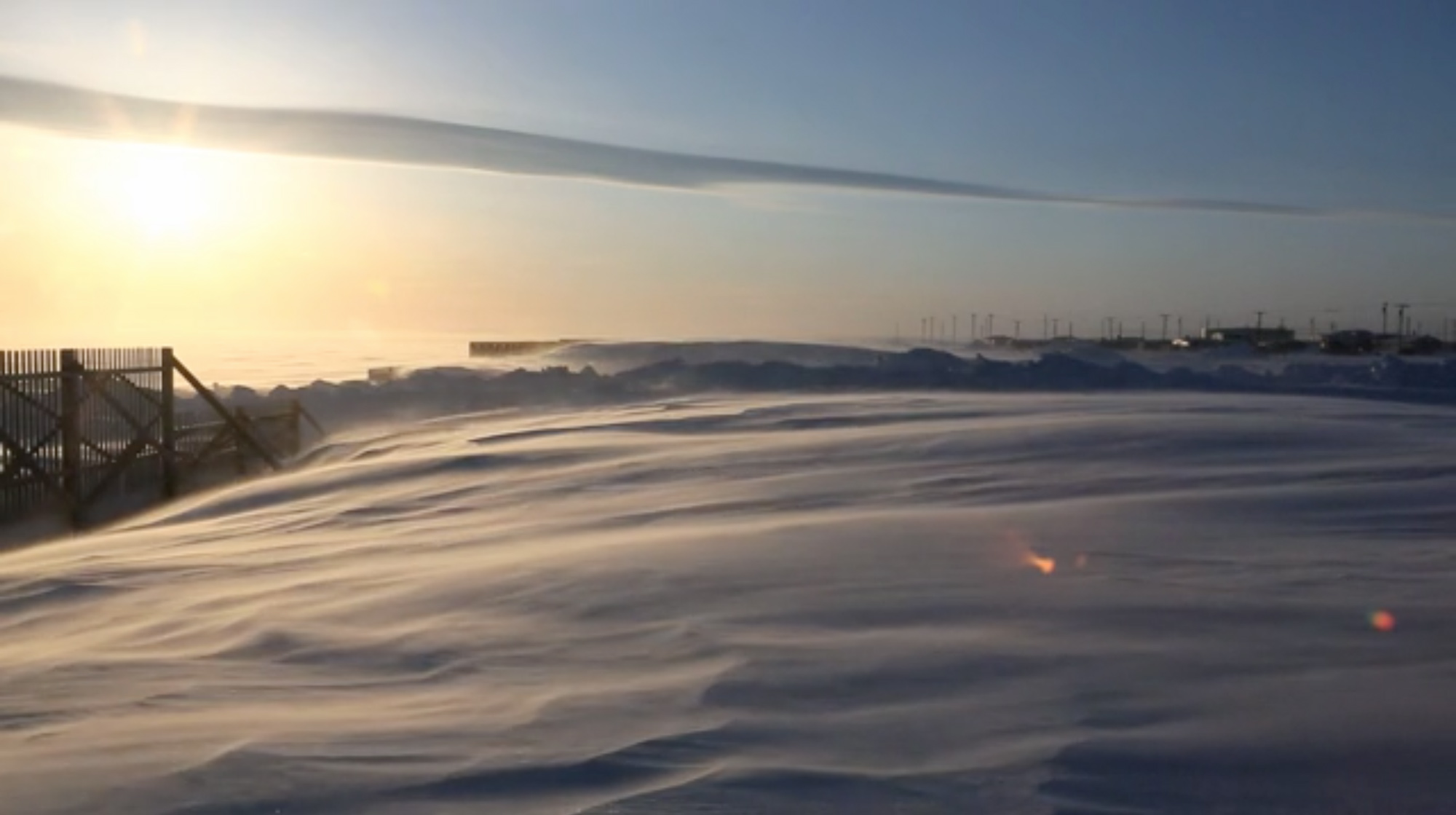
What treats do you have for us in the future?
ZL: We want to keep on telling stories, writing, drawing, painting, filming and photographing! We would like to go back to the north of Alaska and elsewhere in the Arctic. This time we may make a more classical documentary for TV or cinema. And why not another book?
VG: Making a documentary on the web was a fantastic DIY adventure that allowed us a lot of freedom of expression. It was both tiring and stimulating. And we are thrilled that A Whaling Season in Alaska is now available to anyone who has access to the Internet. But for the next documentary, we would like to spend more time in the field… and less time in front of a computer.
For a detailed primer in successful non-linear documentary filmmaking read our Guide to Interactive Documentary: Structure, Tools & Narrative.


